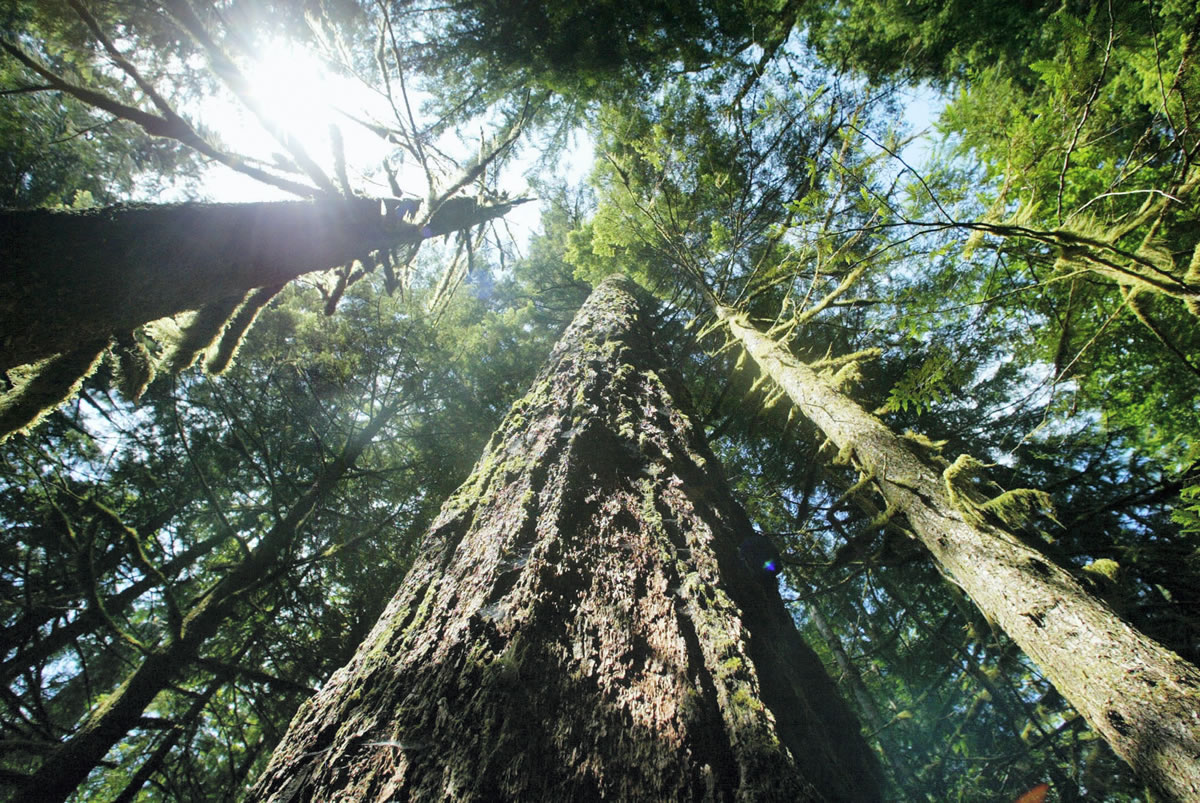SEATTLE — It’s not news to Northwesterners that most of the giant firs and cedars that once dominated the region’s forests are long gone, felled by decades of logging.
But a review of ecosystems around the world finds that big trees are vanishing almost everywhere — and aren’t being replaced.
“What we’re seeing is a global phenomenon,” said ecologist David Lindenmayer of Australian National University, lead author of a paper published in the Dec. 7 edition of the journal Science. “There are different sets of drivers — it might be fire, logging, drought, disease — but they all lead to basically the same outcome.”
The loss of big, old trees can be devastating to thousands of other species that nest and take shelter in their branches and cavities, said University of Washington forestry professor Jerry Franklin, a co-author of the paper.
In some forests, nearly a third of all birds, reptiles, mammals or marsupials make their homes in ancient trees, the scientists reported. Gnarled, old trees also produce a bounty of seeds to replenish the forests and are a vital source of food.
“These big, old trees are really important elements of many forests and many landscapes,” said Franklin, who was a key player in the 1990s-era battle to protect the remnants of the Pacific Northwest’s famed old-growth forests.
Though the causes for the decline are diverse, all involve the common denominator of human intervention.
On the savannas of Northern Australia, nonnative grasses planted to improve cattle and sheep grazing burn seven times hotter than native grass, decimating trees that weathered centuries of normal fire.
If the rate of loss doesn’t abate, all of the trees in the region — both old and young — will be gone in 50 years, Lindenmayer said.
In Brazil, where rain forests have been reduced to fragments, old trees are much more vulnerable to being toppled by wind and parasitized by strangler vines that proliferate after logging.
Many forest ecosystems are so altered by invasive species, human management and shifting climate that young trees no longer are able to grow into behemoths, the scientists said.
‘Change the mind-set’
Forestry experts have long been aware of the decline of big trees, said Oregon State University professor Mark Harmon, who was not involved in the analysis.
But the Science paper is one of the first attempts to pull together evidence from different parts of the world and make the argument that big trees deserve special consideration.
“Maybe it will change the mind-set,” Harmon said.
Lindenmayer got interested in big trees while tracking the fate of Australia’s equivalent of the northern spotted owl: the Leadbeater’s possum, a 4-inch, big-eyed marsupial that can only nest in ash trees at least 200 years old.
Unless the country takes steps to protect the ancient ash trees, the world’s tallest flowering plants, the possum is headed for extinction, he said.
In the Pacific Northwest, legal wrangling over the old-growth-dependent owl led the federal government to restrict logging on millions of acres of federal forest in Washington and Oregon. During the debate, Franklin proposed a more eco-friendly alternative to clear-cutting that leaves some trees standing.
But there’s still no nationwide policy that singles out big, old trees for protection or works to ensure that young trees are able to replace their elders, he said.



